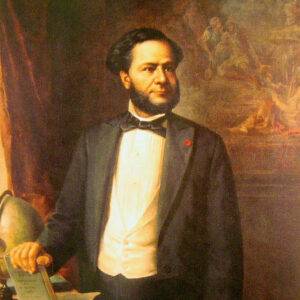
The Republic of Costa Rica is located in the heart of the Americas. Its capital is San Jose, and its official language is Spanish. Costa Rica became independent on September 15, 1821, joining the Federal Republic of Central America, which it was a part of from 1824 to 1838. However, the republic was dissolved in 1838 due to internal struggles between the States.
The country declared its independence little by little, and on August 31, 1848, Costa Rica became a Republic, with Jose Maria Castro Madriz as the last Head of State and the first President of the Republic.
In 1856, Costa Rica joined the war against William Walker, an American “filibuster” who tried to convert Central America into a region that would provide enslaved people for North America, on April 11, 1856.
The National Hero of Costa Rica, Juan Santamaria, distinguished himself as an essential person in Costa Rican history by joining the Battle of Rivas on April 11, 1856.
After a brief civil war in 1949, the constitution established the abolishment of the army; Costa Rica continues to be a force for peace with its lack of military and one of the world’s highest literacy rates.

With a balanced social and economic structure, the country has had an uninterrupted democratic system based on universal suffrage. Since 1949, elections have regularly taken place every four years, making the country one of the most stable in the region

Thanks to the abolishment of the military, Costa Rica has been able to finance areas such as education and health. Today, it stands out internationally thanks to its consolidated democratic system and efforts to reach carbon neutrality by 2021.
The Republic of Costa Rica is located in the heart of the Americas. Its capital is San Jose, and its official language is Spanish. Costa Rica became independent on September 15, 1821, joining the Federal Republic of Central America, which it was a part of from 1824 to 1838. However, the republic was dissolved in 1838 due to internal struggles between the States.
Costa Rica’s total area is 51,100 square kilometers, around the size of the state of Louisiana. The country is divided into 7 provinces: Guanacaste, Puntarenas, San Jose, Heredia, Limon, Alajuela, and Cartago.

The country’s area of 51,100 km2 is very rugged. Its central axis contains a mountain range divided into four cordilleras. These are the sources of the country’s rivers flowing down to both oceans. In the north, the Central Volcanic Cordillera is an extension of the Rocky Mountains, and in the south, the Talamanca Cordillera is the last extension of the Andes.
Costa Rica is one of the smallest republics in Central America, after Belize and El Salvador. We are a mountainous country with many points over 3,000 m, including Irazú Volcano.
Costa Rica has an important number of active volcanoes: Irazú, Arenal, Turrialba, Poás, Miravalles, Orosi, and Rincón de la Vieja Volcano.
Its highest point is Cerro Chirripó (3,821 m), located in the Talamanca Cordillera
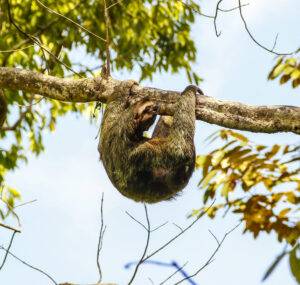
Despite covering only 0.03% of the world’s surface, 5% of the world’s biodiversity is concentrated in Costa Rica. Our commitment to the environment can be seen in our protected areas since 25.5% of the country’s area is currently under state protection.
Protected areas contain volcanoes, hot springs, caves, high spots, islands, beaches, rain forests, dry forests, canyons, rivers, and waterfalls.
The geographic position of the country explains our natural richness.
Locating between the continental masses of North and South America has made the country an essential bridge for countless flora and fauna.
Costa Rica ́s territory is so tiny that it encompasses only 0.03 percent of the planet ́s surface. However, it is still within the top 20 wealthiest countries in biodiversity on Earth in terms of species density. That means it is possible to find more species in 1,000 km2 in Costa Rica than in the same area in huge countries like Brazil or Colombia.
There is a place in Costa Rica where the vitality of natural wildlife and visitors become one, and the water is a giant mirror reflecting the lush foliage all around. Surrounded by a system of natural canals and lagoons running from southeast to northeast, Tortuguero National Park, located in the Northern Caribbean side, is undoubtedly our little Amazonas. It is also one of the most critical places in the world for protecting the green turtle and home of other species such as the manatee, the American crocodile, and the Gaspar fish, which is considered a living fossil.
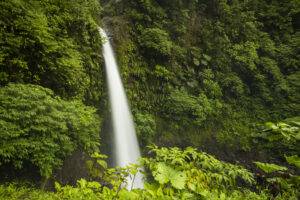
La Amistad International Park (PILA) is not only the most significant natural park in Costa Rica, with almost 200,000 hectares, but also the only bi-national park created by the governments of Costa Rica and Panama in 1982. Therefore, it could explain the name La Amistad, which means friendship in Spanish.
The full extension of this excellent portion of protected land in both countries is nearly 400,000 hectares, covering a great variety of humid, rain, and cloud forests in the Pacific and Atlantic sides and indigenous towns.
Its plumage is scarlet primarily, but its tail feathers are light blue, making the Scarlet Macaw one of the most beautiful birds of the American tropics. In fact, at almost one meter in length, more than half constituted by its pointed striking tail, this bird cannot go unnoticed, mainly because they are often seen in pairs. Some couples may even assemble with others to form a flock of several hundred individuals, a spectacle that is impossible to forget when they fly above the forest canopy.
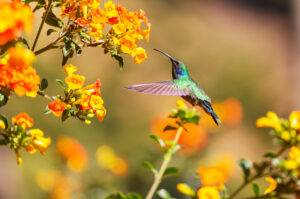
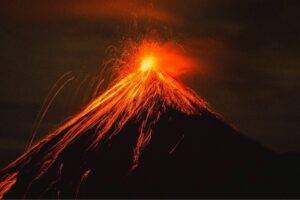
As part of the Pacific Ring of Fire, Costa Rica ́s volcanoes are among the most mesmerizing in the world. The present-day landmass, Costa Rica, is the result of complex volcanic activity that occurred some 75 million years ago and continues today.
Counting every location or crater where an eruption has occurred within its borders, Costa Rica volcanoes boast a stunning 112 sites throughout the country. As a result, most Costa Rica volcanoes and their surrounding areas have been made national parks.
Although the indigenous populations inhabiting Costa Rica before the Spanish arrival did not build architectural structures rivaling the Mayan pyramids of northern Central America, they did leave behind elaborately carved stone spheres whose meaning remains a mystery to this day.

Guayabo is the third archaeological site in Latin America to receive this distinction, after Machu Picchu and Tipon in Peru. Guayabo was constructed between 300 B.C. and 1400 A.D. and was populated by indigenous groups of the Intermediate Cultural Area, which extended from Alajuela, in Costa Rica, all the way to Colombia, Venezuela, and part of Ecuador.
Although Guayabo was no longer populated when the Spaniards arrived. And the causes of its depopulation are still a mystery. Nevertheless, the site was undoubtedly a highly developed cultural and political-religious center for centuries, whose importance was heightened precisely because of its rich resources and the presence of the Turrialba Volcano.
The Uvita tombolo, a sandy bridge connecting the mainland with a rocky islet near Dominical Beach in the Southern Pacific of Costa Rica, looks like a perfect whale ́s tail at low tide. But more interesting is that the place and surroundings are among the best spots to watch humpback whales from North and South America.
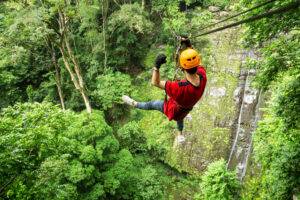

Thanks to the abolishment of the military, Costa Rica has been able to finance areas such as education and health, and today it stands out internationally thanks to its consolidated democratic system and its efforts to reach carbon neutrality by the year 2021
Historically, the most active of all Costa Rica volcanoes, Irazú, is also the giant neighbor of Costa Rica ́s capital city. Located, in fact, 30 kilometers from San Jose, this colossal giant reaches 3,432 meters above sea level, and thanks to its height, on a clear day, both the Pacific and the Atlantic oceans are visible from its peak.
Caribbean
Central Valley
Central Pacific
Guanacaste
Northern Plains
Puntarenas
South Pacific
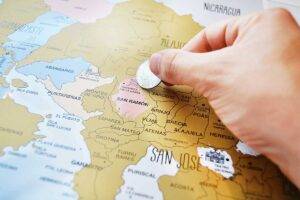

Costa Rica’s beaches offer the perfect escape from noisy cities. So whether you’re traveling with friends, family, or special someone, you’re sure to find the ideal place to stay.
Costa Rica’s beaches are surrounded by forests and have great natural diversity. Many contain beautiful coral reefs, perfect for diving and exploring. Most have warm water throughout the year, so they can be enjoyed year-round.
If it’s the variety, you’re interested in, each coast offers different shades and textures of sand. White, yellow, grey, and black beaches result from the constant crashing of various seashells on coral reefs.
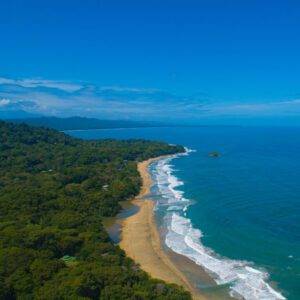
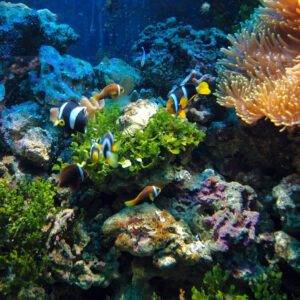
The Caribbean region of Costa Rica stands out for its variety of aquatic ecosystems, and its beautiful white and black sand beaches provide an ideal backdrop for activities such as sport fishing, snorkeling, and sunbathing.
The Pacific coast beaches are trendy for surfing.
The family environment characteristic of this offering allows you to enjoy personalized attention and helps you learn about rural culture, farming traditions, and small artisanal industries.
It invites you inside rural living in our country through traditional cuisine, the authenticity of the communities, and the wealth that comes from living in a natural environment where sustainable practices promoted by business owners dominate as part of this product.
Costa Rica is a lush country where nature is on display in all its splendor, thanks to extraordinary biodiversity.
This product is based on studying and observing salient features of nature and ecological, geological, and other processes, such as bird watching, observation of flora and fauna, volcanoes, hiking, trails, and national parks.
The territory is divided into 29 national parks, 19 wildlife refuges, eight biological reserves, and a series of protected areas that captivate lovers of ecotourism activities.

The Republic of Costa Rica is located in the heart of the Americas. Its capital is San Jose, and its official language is Spanish. Costa Rica became independent on September 15, 1821, joining the Federal Republic of Central America, which it was a part of from 1824 to 1838. However, the republic was dissolved in 1838 due to internal struggles between the States.
The country declared its independence little by little, and on August 31, 1848, Costa Rica became a Republic, with Jose Maria Castro Madriz as the last Head of State and the first President of the Republic.
In 1856, Costa Rica joined the war against William Walker, an American “filibuster” who tried to convert Central America into a region that would provide enslaved people for North America, on April 11, 1856.
The National Hero of Costa Rica, Juan Santamaria, distinguished himself as an essential person in Costa Rican history by joining the Battle of Rivas on April 11, 1856.
After a brief civil war in 1949, the constitution established the abolishment of the army; Costa Rica continues to be a force for peace with its lack of military and one of the world’s highest literacy rates.

With a balanced social and economic structure, the country has had an uninterrupted democratic system based on universal suffrage. Since 1949, elections have regularly taken place every four years, making the country one of the most stable in the region

Thanks to the abolishment of the military, Costa Rica has been able to finance areas such as education and health. Today, it stands out internationally thanks to its consolidated democratic system and efforts to reach carbon neutrality by 2021.
The Republic of Costa Rica is located in the heart of the Americas. Its capital is San Jose, and its official language is Spanish. Costa Rica became independent on September 15, 1821, joining the Federal Republic of Central America, which it was a part of from 1824 to 1838. However, the republic was dissolved in 1838 due to internal struggles between the States.
Costa Rica’s total area is 51,100 square kilometers, around the size of the state of Louisiana. The country is divided into 7 provinces: Guanacaste, Puntarenas, San Jose, Heredia, Limon, Alajuela, and Cartago.

The country’s area of 51,100 km2 is very rugged. Its central axis contains a mountain range divided into four cordilleras. These are the sources of the country’s rivers flowing down to both oceans. In the north, the Central Volcanic Cordillera is an extension of the Rocky Mountains, and in the south, the Talamanca Cordillera is the last extension of the Andes.
Costa Rica is one of the smallest republics in Central America, after Belize and El Salvador. We are a mountainous country with many points over 3,000 m, including Irazú Volcano.
Costa Rica has an important number of active volcanoes: Irazú, Arenal, Turrialba, Poás, Miravalles, Orosi, and Rincón de la Vieja Volcano.
Its highest point is Cerro Chirripó (3,821 m), located in the Talamanca Cordillera.

Despite covering only 0.03% of the world’s surface, 5% of the world’s biodiversity is concentrated in Costa Rica. Our commitment to the environment can be seen in our protected areas since 25.5% of the country’s area is currently under state protection.
Protected areas contain volcanoes, hot springs, caves, high spots, islands, beaches, rain forests, dry forests, canyons, rivers, and waterfalls.
The geographic position of the country explains our natural richness.
Locating between the continental masses of North and South America has made the country an essential bridge for countless flora and fauna.
Costa Rica ́s territory is so tiny that it encompasses only 0.03 percent of the planet ́s surface. However, it is still within the top 20 wealthiest countries in biodiversity on Earth in terms of species density. That means it is possible to find more species in 1,000 km2 in Costa Rica than in the same area in huge countries like Brazil or Colombia.
There is a place in Costa Rica where the vitality of natural wildlife and visitors become one, and the water is a giant mirror reflecting the lush foliage all around. Surrounded by a system of natural canals and lagoons running from southeast to northeast, Tortuguero National Park, located in the Northern Caribbean side, is undoubtedly our little Amazonas. It is also one of the most critical places in the world for protecting the green turtle and home of other species such as the manatee, the American crocodile, and the Gaspar fish, which is considered a living fossil.

La Amistad International Park (PILA) is not only the most significant natural park in Costa Rica, with almost 200,000 hectares, but also the only bi-national park created by the governments of Costa Rica and Panama in 1982. Therefore, it could explain the name La Amistad, which means friendship in Spanish.
The full extension of this excellent portion of protected land in both countries is nearly 400,000 hectares, covering a great variety of humid, rain, and cloud forests in the Pacific and Atlantic sides and indigenous towns.
Its plumage is scarlet primarily, but its tail feathers are light blue, making the Scarlet Macaw one of the most beautiful birds of the American tropics. In fact, at almost one meter in length, more than half constituted by its pointed striking tail, this bird cannot go unnoticed, mainly because they are often seen in pairs. Some couples may even assemble with others to form a flock of several hundred individuals, a spectacle that is impossible to forget when they fly above the forest canopy.


As part of the Pacific Ring of Fire, Costa Rica ́s volcanoes are among the most mesmerizing in the world. The present-day landmass, Costa Rica, is the result of complex volcanic activity that occurred some 75 million years ago and continues today.
Counting every location or crater where an eruption has occurred within its borders, Costa Rica volcanoes boast a stunning 112 sites throughout the country. As a result, most Costa Rica volcanoes and their surrounding areas have been made national parks.
Although the indigenous populations inhabiting Costa Rica before the Spanish arrival did not build architectural structures rivaling the Mayan pyramids of northern Central America, they did leave behind elaborately carved stone spheres whose meaning remains a mystery to this day.

Guayabo is the third archaeological site in Latin America to receive this distinction, after Machu Picchu and Tipon in Peru. Guayabo was constructed between 300 B.C. and 1400 A.D. and was populated by indigenous groups of the Intermediate Cultural Area, which extended from Alajuela, in Costa Rica, all the way to Colombia, Venezuela, and part of Ecuador.
Although Guayabo was no longer populated when the Spaniards arrived. And the causes of its depopulation are still a mystery. Nevertheless, the site was undoubtedly a highly developed cultural and political-religious center for centuries, whose importance was heightened precisely because of its rich resources and the presence of the Turrialba Volcano.
The Uvita tombolo, a sandy bridge connecting the mainland with a rocky islet near Dominical Beach in the Southern Pacific of Costa Rica, looks like a perfect whale ́s tail at low tide. But more interesting is that the place and surroundings are among the best spots to watch humpback whales from North and South America.

Born in Costa Rica in the 90s, the canopy tour is the closest anyone will come to feeling like a monkey traveling through the tree tops. It is also one of the best ways to explore the richness of the canopy, where the most significant amount of the forest ́s biodiversity is found, and to raise awareness about the rainforest’s fragile ecosystem.

Thanks to the abolishment of the military, Costa Rica has been able to finance areas such as education and health, and today it stands out internationally thanks to its consolidated democratic system and its efforts to reach carbon neutrality by the year 2021.
Historically, the most active of all Costa Rica volcanoes, Irazú, is also the giant neighbor of Costa Rica ́s capital city. Located, in fact, 30 kilometers from San Jose, this colossal giant reaches 3,432 meters above sea level, and thanks to its height, on a clear day, both the Pacific and the Atlantic oceans are visible from its peak.
Caribbean
Central Valley
Central Pacific
Guanacaste
Northern Plains
Puntarenas
South Pacific


Costa Rica’s beaches offer the perfect escape from noisy cities. So whether you’re traveling with friends, family, or special someone, you’re sure to find the ideal place to stay.
There’s something for everyone, from big hotels with comfortable facilities to ultra-posh boutique hotels. Besides great accommodations, Costa Rica is increasingly renowned for its varied and delicious foods distinct to each region.
Costa Rica’s beaches are surrounded by forests and have great natural diversity. Many contain beautiful coral reefs, perfect for diving and exploring. Most have warm water throughout the year, so they can be enjoyed year-round.
If it’s the variety, you’re interested in, each coast offers different shades and textures of sand. White, yellow, grey, and black beaches result from the constant crashing of various seashells on coral reefs.


The Caribbean region of Costa Rica stands out for its variety of aquatic ecosystems, and its beautiful white and black sand beaches provide an ideal backdrop for activities such as sport fishing, snorkeling, and sunbathing.
The Pacific coast beaches are trendy for surfing.
The family environment characteristic of this offering allows you to enjoy personalized attention and helps you learn about rural culture, farming traditions, and small artisanal industries.
It invites you inside rural living in our country through traditional cuisine, the authenticity of the communities, and the wealth that comes from living in a natural environment where sustainable practices promoted by business owners dominate as part of this product.
Costa Rica is a lush country where nature is on display in all its splendor, thanks to extraordinary biodiversity.
This product is based on studying and observing salient features of nature and ecological, geological, and other processes, such as bird watching, observation of flora and fauna, volcanoes, hiking, trails, and national parks.
The territory is divided into 29 national parks, 19 wildlife refuges, eight biological reserves, and a series of protected areas that captivate lovers of ecotourism activities.